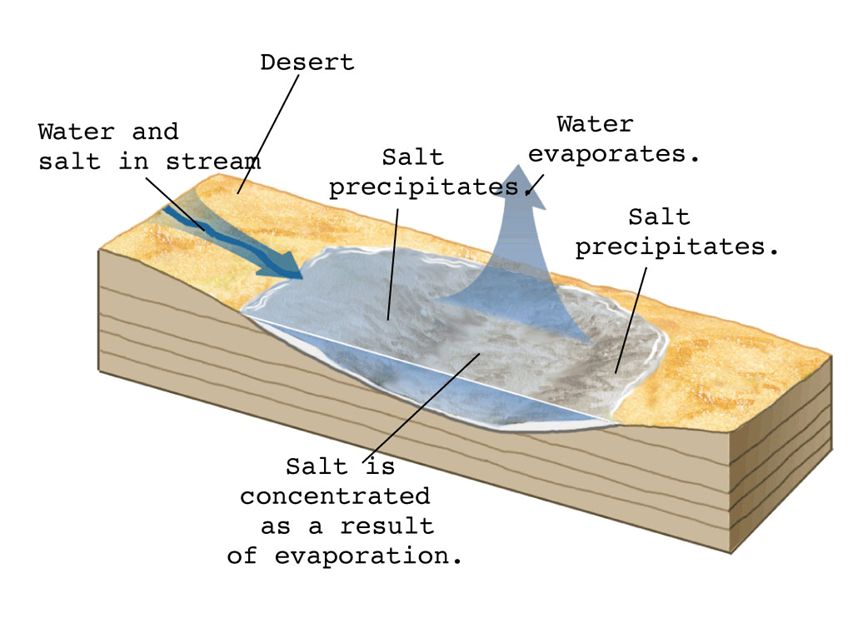#2: Source of Material
Sometimes it is helpful to know where the particle came from. Scientists classify particles by the source of the material in one of four ways: Lithogenous, Biogenous, Hydrogenous and Cosmogenous.
Lithogenous Sediments
Sediments from terrestrial (land) sources. These sediments includes:
- Sands and muds from continental margins
- Glacial deposits
- Clays
- Red Clays
Red Clays - Are found in low productivity areas with low sedimentation rates. Most often these are wind-blown sediments. These sediments are red in color.

| Dust plumes blew off the north African coast and over the Mediterranean Sea on May 19, 2008. The Moderate Resolution Imaging Spectroradiometer (MODIS) on NASA’s Aqua satellite took this picture the same day. In this image, the translucent dust plumes blow off the coast of Libya, only barely obscuring the satellite’s view of the ocean. The dust mingles with cloud cover, particularly in the northeast. Clouds are especially thick in the southeast. The clouds could be associated with the same weather system that stirred the dust. |
Organic-Rich Sediments - sediments that are composed of mostly organic material can get buried quickly. The weight of overlying sediment plus increase temperature "cook: organic matter to create petroleum. These rocks are usually black and have a distinctive "petroleum" smell.
Oxidized Sediments - these sediments have been buried slowly, and the organic matter will oxidize and produce water + carbon dioxide. One will typically find shells or burrows in these sediments, which indicates that there is some type of life in the sediment and that means there is oxygen present. Oxidized muds are either red OR olive greenish gray in color.
Unoxidized Sediments - these sediments have been rapidly buried, with little time for oxidation. Unoxidized mud is black in color and has either no smell or an earthy smell.
Biogenous Sediments
Biogenous sediments originate from the hard parts of organisms (shells, bones, etc). In order for a sediment to be classified as biogenous it must contain 30% or more components biologic in origin. There are three subcategories
- Biogenic Sands
- Shells
- Corals
- Echinoid spines
- Foraminifera
- Bryozoans
- Siliceous Oozes
- Diatoms
- Radiolaria
- Calcareous Oozes
- Foraminifera
- Coccolithophores
- Pteropods
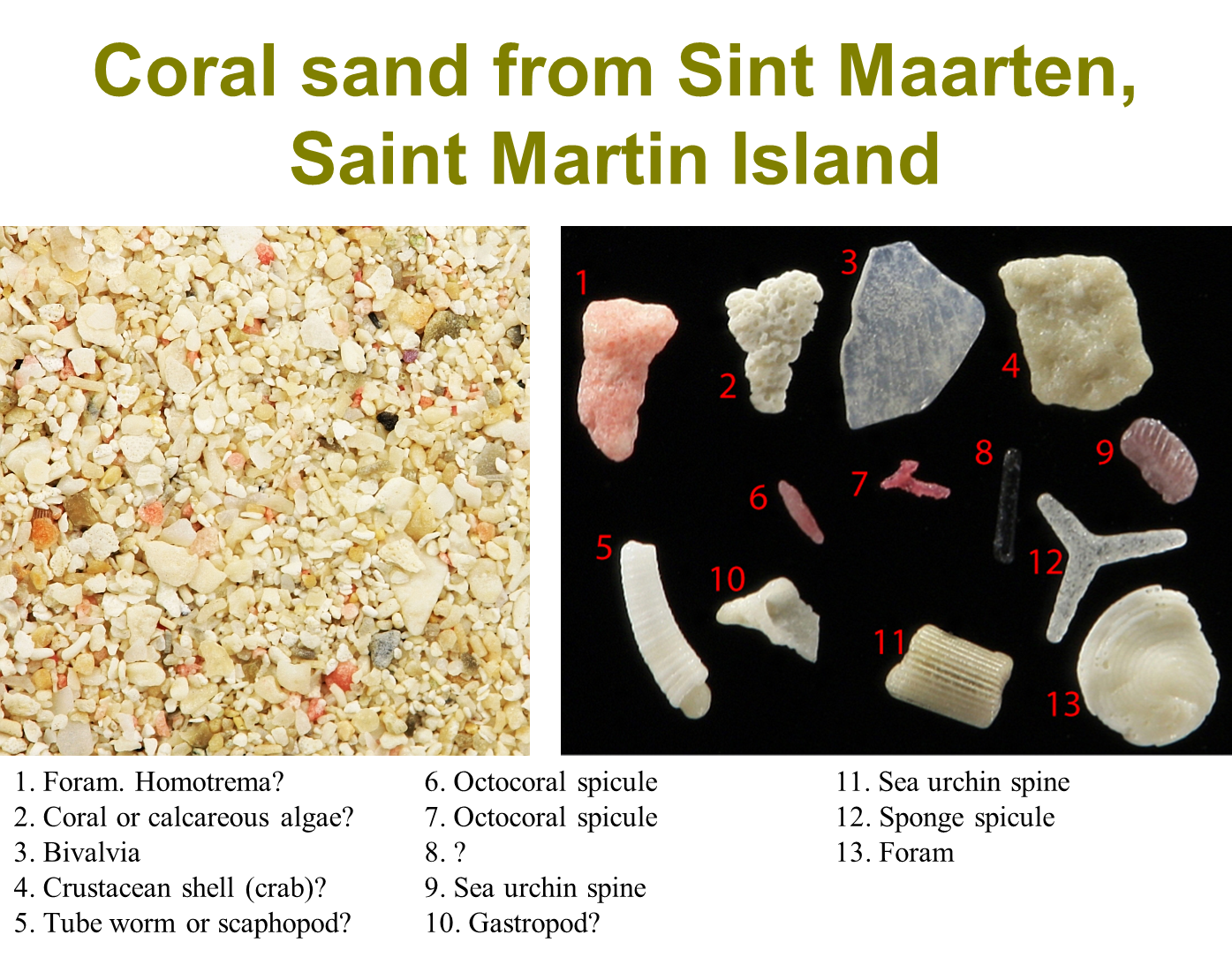
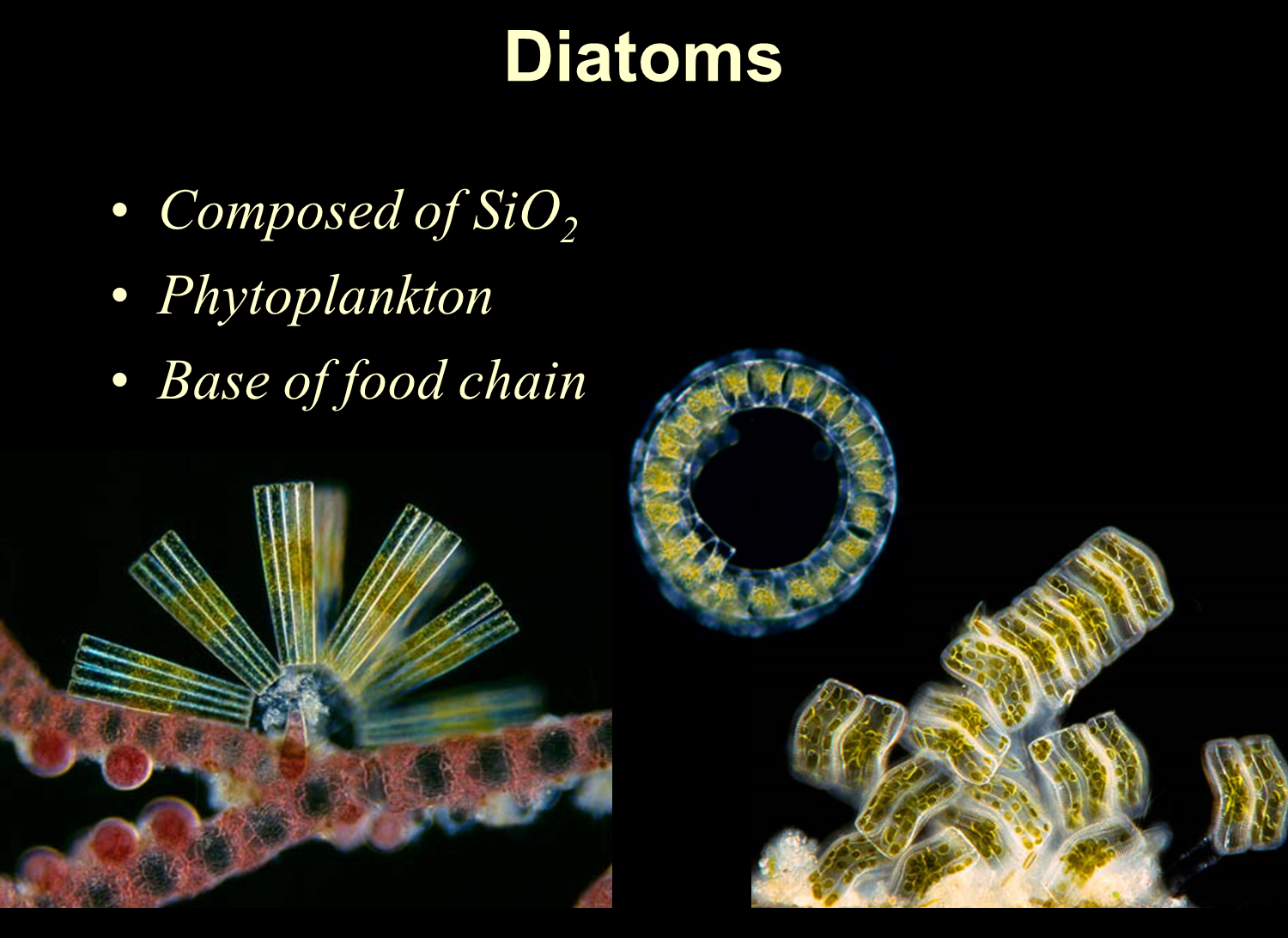
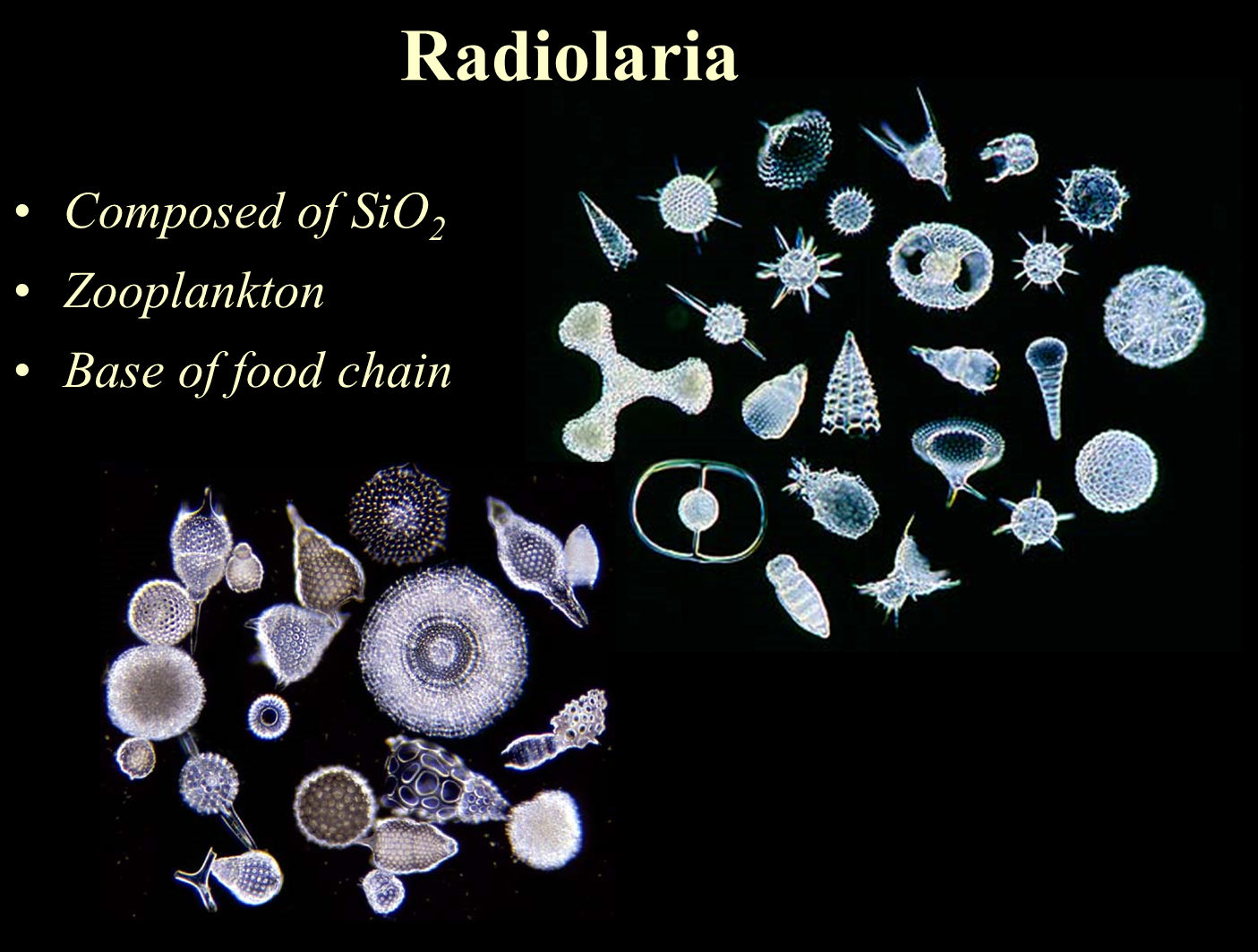

Plankton such as diatoms and radiolaria belong to a group called microplankton - organisms too small to see with the naked eye so a microscope is needed. These plankton typically accumulate very slowly and become incorporated with the muds on the sea floor. Organisms with silica shells dissolve fairly slowly in seawater; organisms with calcium carbonate shells dissolve rapidly in seawater, especially below the Calcium Carbonate Compensation Depth (CCCD). Below this depth in the ocean anything made of calcium carbonate dissolves very rapidly. Yet we can find vast deposits of each type of organism on the sea floor. How does this happen?
Some areas of the ocean's surface are high productivity areas. In these areas there is a larger than normal concentration of these silica or calcium carbonate shelled organisms. Since there are more of them in these areas as opposed to other areas of the ocean, they accumulate in large deposits on the sea floor. when they die. Therefore, more of them get preserved than dissolved, and thus become a part of the rock record.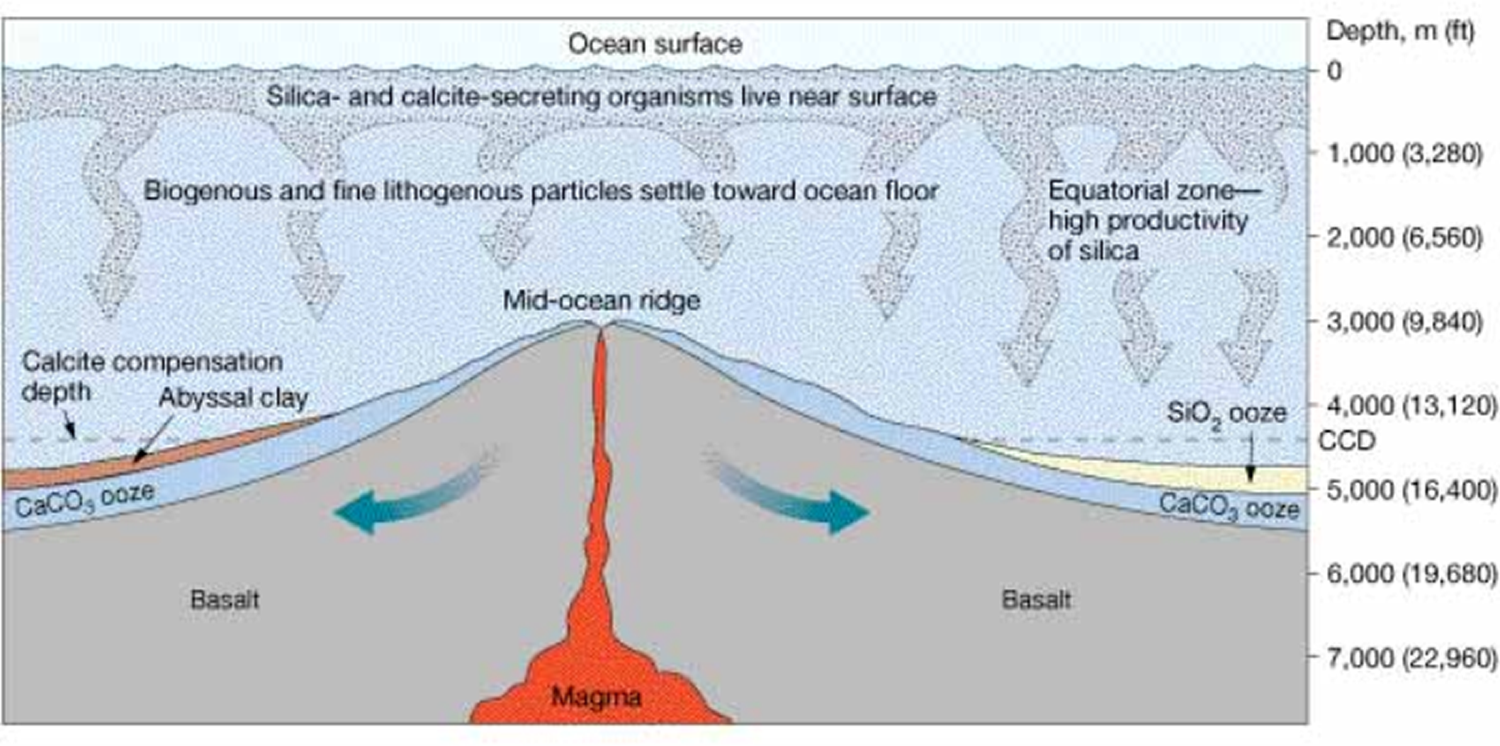
Hydrogenous Sediments
Hydrogenous sediments form from minerals that crystallize directly from seawater.
Manganese nodules were 1st discovered in 1868, Kara Sea (Russia). They are found at depths of 4,000 to 6,000 m and grow at a rate of 1-3 mm/m.y. It is not clear how these nodules form.
Calcium carbonates - form when CaCO3 enriched water precipitates out calcite, which accumulates on the sea floor to form layers. These sediments lithify the CaCO3 mud into LIMESTONE.
Metal sulfides - form in hydrothermal vent systems.
- Black smokers – mostly sulfides, but also other metals
- White smokers – minerals with barium, calcium and silicon
Evaporites - evaporation triggers deposition of chemical precipitates such as rock salt and rock gypsum.
Cosmogenous Sediments
Cosmogenous sediments are derived from outer space, such as meteorites, “space dust”, etc. Iridium is a rare element here on Earth, but is common in meteorites. Thus, if a layer of sediment is enriched with iridium, that suggests that there is an impact crater nearby.


